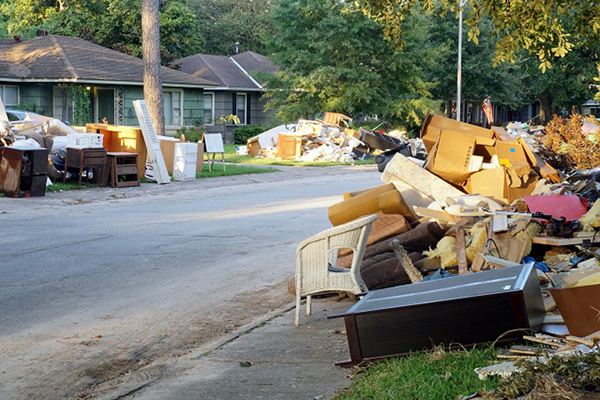- South Texas Students Meet Accordion Music Icons Los Tigres Del Norte In Edinburg Thanks To Khs America/Hohner Alianza Académica Initiative
- Fragile Planet Offers a Nighttime Wildlife Experience
- Falcons Soccer Off & Running
- Cameron County Receives Funds to Improve Two Parks
- Falcons Complete First Half of 32-6A
- School District to Help out Victims of California Wildfires
- Sand Castle Days Continued Despite Unexpected Weather
- Ready for District
- Discussion of Garbage Dumpster Rates, Agreements Between State & City on Highway Regulations, and More
- 31st Annual Shrimp Cook-Off is Right Around the Corner
Texas Improves Flood Preparedness After Hurricane Harvey
- Updated: July 12, 2019

Flood damage debris lines a Houston residential street following Hurricane Harvey in 2017. More than 200,000 homes and businesses along the Texas Gulf Coast were damaged or destroyed by the storm. Photo: IrinaK/AdobeStock
by Mark Richardson
HOUSTON – The State of Texas, still reeling from damage from Hurricane Harvey and other recent storms, has taken a major step toward improving its flood preparedness.
Two years ago, the Category Four storm left 89 people dead and caused some $125 billion in damage along the Texas coast. In its first opportunity to deal with the unprecedented disaster, the Texas Legislature approved, and Gov. Greg Abbott signed, a package of bills this year to improve the state’s readiness for disaster events.
State Rep. Dade Phelan, R-Beaumont, who sponsored several bills to update and modernize the state’s planning process, says an overhaul was overdue.
“I was seeing some of my local governments doing it the way we’ve always done it – each drainage district doing their own thing, each city was doing their own thing – and that just wasn’t going to work,” says Phelan. “We need to approach flooding from a regional standpoint, a holistic standpoint. Water does not respect political boundaries.”
Lawmakers approved one bill (Senate Bill 7) to tap the state’s Rainy-Day Fund – essentially its savings account – for $800 million to finance flood mitigation projects. Another measure (SB 8) requires the state’s first flood plan developed using regional watersheds. A third bill (SB 339) strengthens disclosure requirements to better inform potential buyers of a property’s flood history.
The new plan will require pre-disaster mitigation projects, such as elevating homes that have flooded repeatedly and removing vulnerable structures from flood plains. It will also ensure that funding is available to restore natural areas that absorb floodwaters, like wetlands, salt marshes and streams.
Laura Lightbody, director of the Flood-Prepared Communities project at The Pew Charitable Trusts, says these types of programs should pay major dividends for the state over time.
“These required watershed-level plans are really important,” says Lightbody. “How do we take a big picture look at our community, and our development and our footprint, to understand how to avoid these future losses next time we see a big flood event?”
Lightbody says research shows that governments generally save $6 in future losses for every dollar spent on pre-disaster mitigation.
Support for this reporting was provided by The Pew Charitable Trusts.
